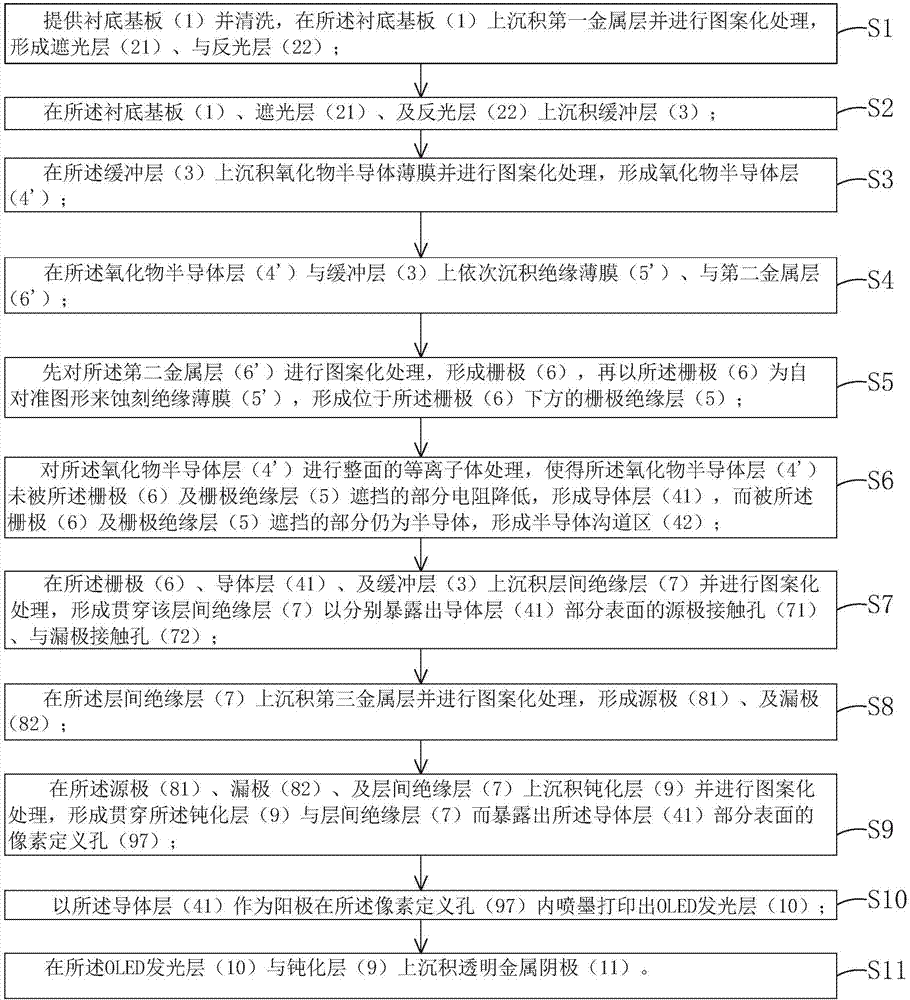Top-emitting-type OLED panel manufacturing method and structure thereof
A manufacturing method and top-emission technology, applied in the field of OLED display, can solve problems such as high risk of defective problems, complicated etching process, and multi-mask number, etc., achieve low risk of defective problems, save the number of photomasks, and simplify the manufacturing process Effect
- Summary
- Abstract
- Description
- Claims
- Application Information
AI Technical Summary
Problems solved by technology
Method used
Image
Examples
Embodiment Construction
[0060] In order to further illustrate the technical means adopted by the present invention and its effects, the following describes in detail in conjunction with preferred embodiments of the present invention and accompanying drawings.
[0061] see figure 1 , the present invention firstly provides a method for manufacturing a top-emitting OLED panel, comprising the following steps:
[0062] Step S1, such as figure 2 As shown, the base substrate 1 is provided and cleaned, the first metal layer is deposited on the base substrate 1 and patterned through yellow light and etching processes, and a light shielding layer 21 is formed in the area corresponding to the thin film transistor to be fabricated. A reflective layer 22 is formed in a region corresponding to the OLED to be fabricated.
[0063] Specifically, the base substrate 1 is preferably a glass substrate; the material of the first metal layer is one or more alloys of molybdenum (Mo), aluminum (Al), copper (Cu), and titan...
PUM
 Login to View More
Login to View More Abstract
Description
Claims
Application Information
 Login to View More
Login to View More - R&D
- Intellectual Property
- Life Sciences
- Materials
- Tech Scout
- Unparalleled Data Quality
- Higher Quality Content
- 60% Fewer Hallucinations
Browse by: Latest US Patents, China's latest patents, Technical Efficacy Thesaurus, Application Domain, Technology Topic, Popular Technical Reports.
© 2025 PatSnap. All rights reserved.Legal|Privacy policy|Modern Slavery Act Transparency Statement|Sitemap|About US| Contact US: help@patsnap.com



